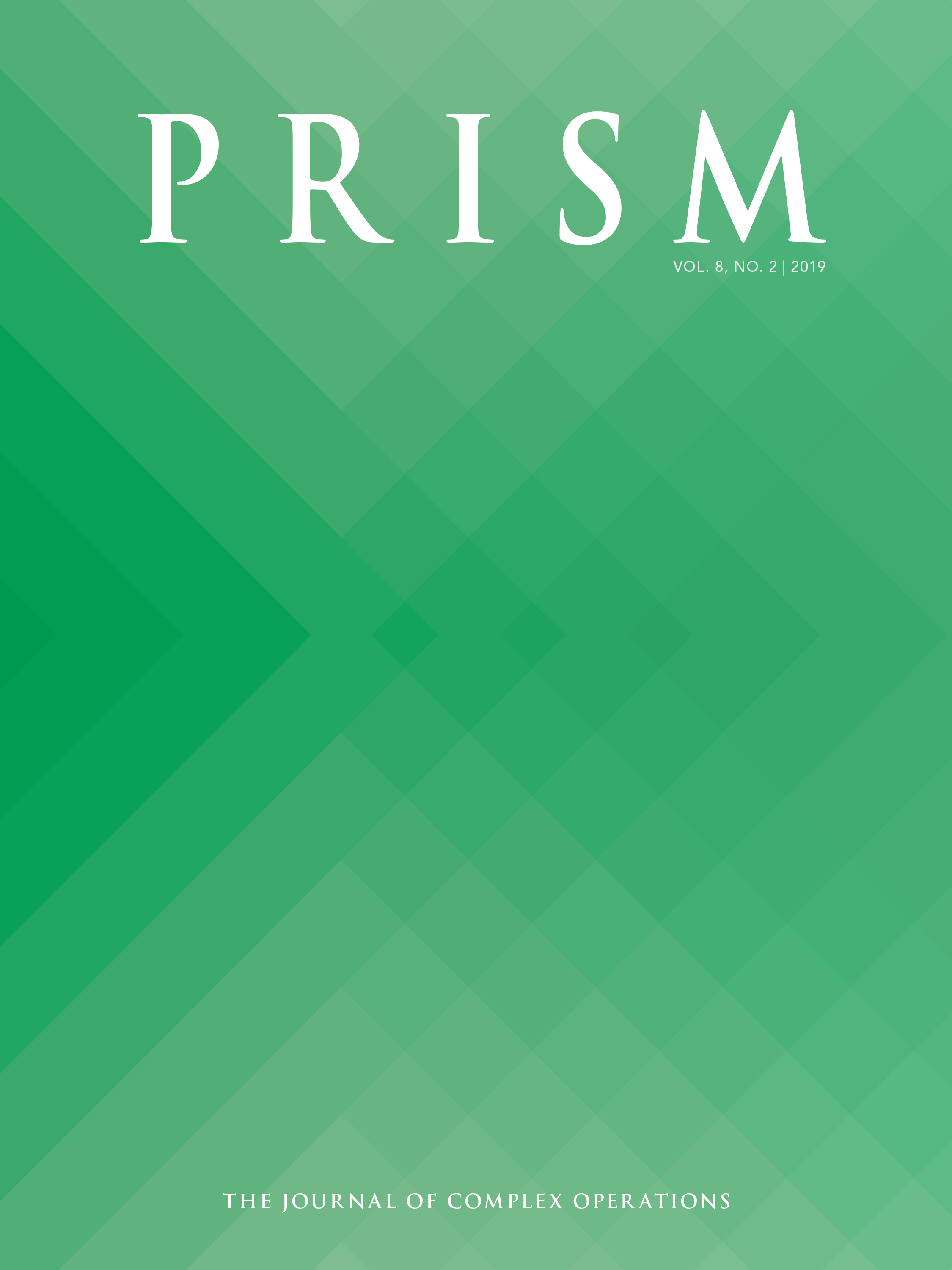
“Taking Responsibility in a Dangerous World”—the aptly titled feature by Federica Mogherini, the High Representative of the European Union for Foreign Affairs and Security Policy—sets the tone for our latest edition of PRISM. A non-themed edition, PRISM Vol. 8, No. 2 explores the business of terrorism; lessons learned from 18 years of war; the emergence of hybrid warfare; the potential militarization of robotic automated systems and artificial intelligence; Russia’s resurgence, and Sweden’s strategy of Total Defense in response to Russia’s resurgent assertiveness; as well as the rapid growth of Iran’s Islamic Revolution Guard Corps, and a comparative analysis of international approaches to diplomatic security. The edition features the perspectives of warfighters, scholars, practitioners, and diplomats from Israel, Italy, Sweden, the United Kingdom, as well as the United States. Distinguished perspectives include those of a Defense Minister, Special Inspector General for Afghanistan Reconstruction, former Commander Joint Special Operations Command, and former UN Under Secretary General for Safety and Security. Irrespective of the rank or specialty, each of our newest authors are thought leaders. PRISM